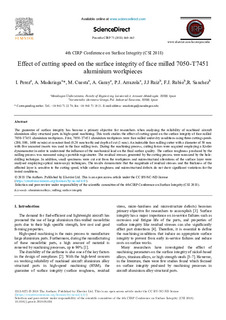| dc.rights.license | Attribution-NonCommercial-NoDerivatives 4.0 International | * |
| dc.contributor.author | Pérez Guisado, Ion | |
| dc.contributor.author | Madariaga, Aitor | |
| dc.contributor.author | ARRAZOLA, PEDRO JOSE | |
| dc.contributor.author | CUESTA ZABALAJAUREGUI, MIKEL | |
| dc.contributor.author | Garay, Ainara | |
| dc.contributor.other | Ruiz, J.J. | |
| dc.contributor.other | Rubio, F.J. | |
| dc.contributor.other | Sanchez, R. | |
| dc.date.accessioned | 2018-07-27T09:56:26Z | |
| dc.date.available | 2018-07-27T09:56:26Z | |
| dc.date.issued | 2018 | |
| dc.identifier.issn | 2212-8271 | eu_ES |
| dc.identifier.other | https://katalogoa.mondragon.edu/janium-bin/janium_login_opac.pl?find&ficha_no=147891 | eu_ES |
| dc.identifier.uri | https://hdl.handle.net/20.500.11984/1097 | |
| dc.description.abstract | The guarantee of surface integrity has become a primary objective for researchers when analysing the reliability of machined aircraft aluminium alloy structural parts in high-speed machining. This work studies the effect of cutting speed on the surface integrity of face milled 7050-T7451 aluminium workpieces. First, 7050-T7451 aluminium workpieces were face milled under dry conditions using three cutting speeds (200, 800, 1400 m/min) at constant feed (0.20 mm/tooth) and depth of cut (1 mm). An indexable face milling cutter with a diameter of 50 mm with five uncoated inserts was used in the face milling tests. During the machining process, cutting forces were acquired employing a Kistler dynamometer in order to understand the influence of the mechanical load on the final surface quality. The surface roughness p roduced by the milling process was measured using a portable rugosimeter. The residual stresses generated by the cutting process were measured by the holedrilling technique. In addition, small specimens were cut out from the workpieces and microstructural alterations of the surface layer were analysed employing optical microscopy techniques. The results demonstrate that the magnitude of residual stresses and the thickness of the affected layer is sensitive to the cutting speed, while surface roughness and microstructural defects do not show significant variations for the tested conditions. | |
| dc.description.sponsorship | The authors thank the Spanish Governments for the financial support given to the project TEMPROCEN (CIEN_ IDI-20141299). | eu_ES |
| dc.language.iso | eng | eu_ES |
| dc.publisher | Elsevier Ltd. | eu_ES |
| dc.rights | © 2018 The Authors | eu_ES |
| dc.rights.uri | http://creativecommons.org/licenses/by-nc-nd/4.0/ | * |
| dc.subject | aluminium alloys | eu_ES |
| dc.subject | milling | eu_ES |
| dc.subject | Surface Integrity | eu_ES |
| dc.title | Effect of cutting speed on the surface integrity of face milled 7050-T7451 aluminium workpieces | eu_ES |
| dc.type | http://purl.org/coar/resource_type/c_6501 | |
| dcterms.accessRights | http://purl.org/coar/access_right/c_abf2 | eu_ES |
| dcterms.source | Procedia CIRP | eu_ES |
| local.contributor.group | Mecanizado de alto rendimiento | eu_ES |
| local.description.peerreviewed | true | eu_ES |
| local.description.publicationfirstpage | 460 | eu_ES |
| local.description.publicationlastpage | 465 | eu_ES |
| local.identifier.doi | https://doi.org/10.1016/j.procir.2018.05.034 | eu_ES |
| local.relation.projectID | Gobierno de España. (CIEN_IDI-20141299). TEMPROCEN | eu_ES |
| local.source.details | Vol. 71 | eu_ES |
| oaire.format.mimetype | application/pdf | |
| oaire.file | $DSPACE\assetstore | |
| oaire.resourceType | http://purl.org/coar/resource_type/c_6501 | eu_ES |
| oaire.version | http://purl.org/coar/version/c_970fb48d4fbd8a85 | eu_ES |








